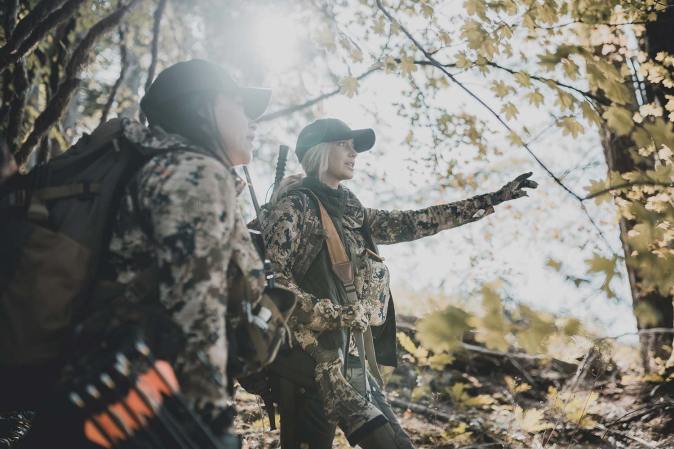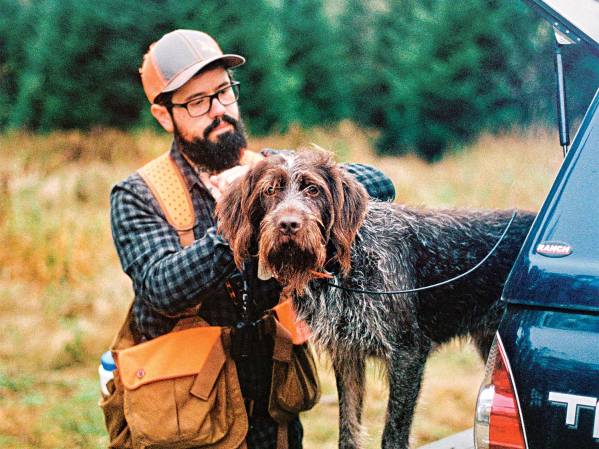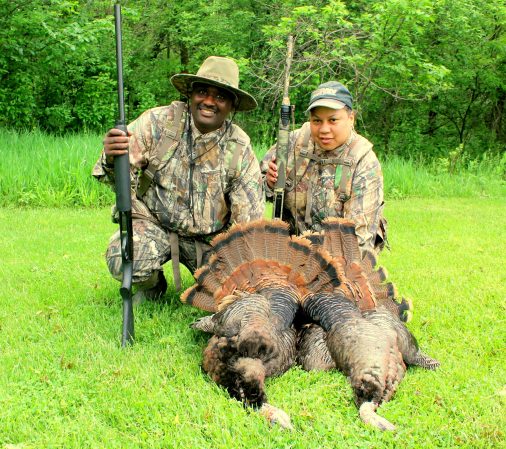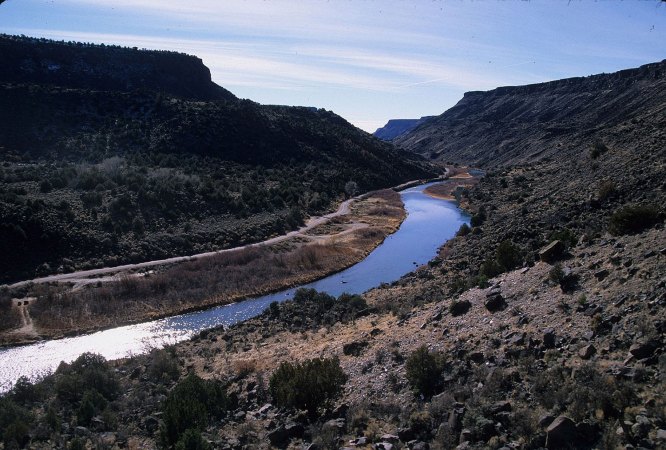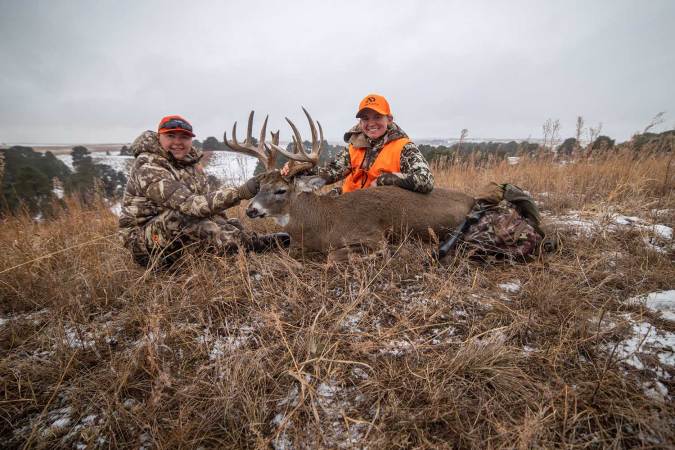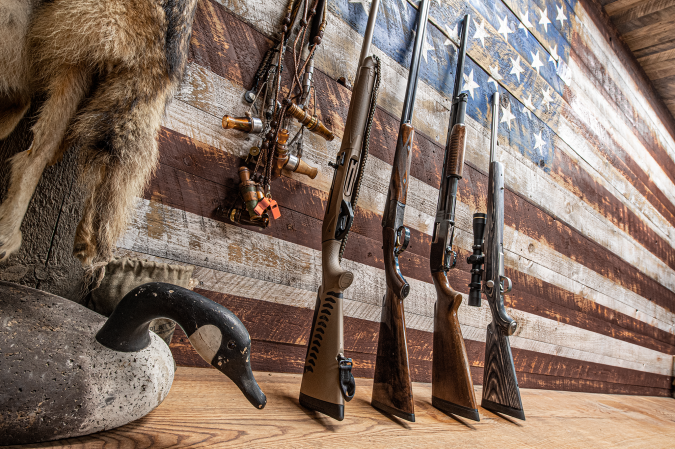You know the doom and gloom: millions of hunters have been aging out of the sport over the last few decades. Those of us in our 20s, 30s, and 40s have a monumental task ahead. We have to recruit new hunters—lots of them—that are from diverse cultural backgrounds and urban areas. And, we have to keep them engaged in the sport, so their hunting careers last more than a single season. If we fail to do this, the money that funds wildlife agencies and conservation initiatives will most certainly dry up.
It’s a difficult task, though new bipartisan legislation (Pittman-Robertson Modernization Act) that allows excise taxes to now be used for R3 programs may help. However, more money doesn’t automatically equate to more hunters. All kinds of different people are coming into hunting (or at least considering it), and how they view killing animals is much different than that of traditional hunters. Hipsters, farm-to-table enthusiasts, and new adult hunters who live in urban areas also have opinions on where hunting should be headed. The newcomers and veteran hunters have to decide how to navigate those murky waters together.
How are we doing so far?
To find out, I talked to a bunch of the people—from various backgrounds and avenues into the hunting world—who are trying to make marked change in our sport. All these folks have found ways to show hunting in a positive light and they’re honest about how difficult it is. The main takeaway? We had better start listening to one another.
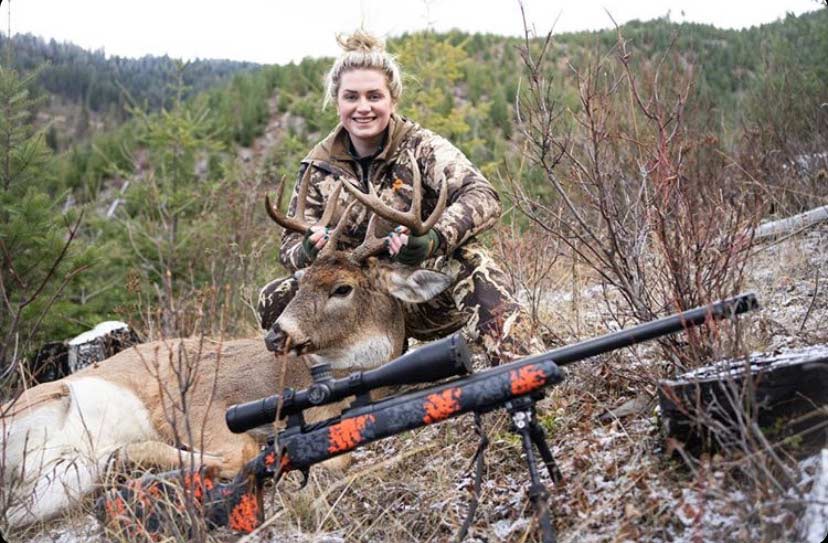
Hannah Kycek: We Need to Show the Real Side of Hunting
Riding on the bench seat of a 1978 Chevy Scottsdale, tooling along logging roads of western Washington’s rainforest was how Hannah Kycek first learned to hunt. Her feet could not yet touch the floorboards of the old pickup, and she remembers looking up to a single dad trying to raise two kids on a tight budget.
“The one thing I always remember him saying was ‘the woods are free,’” said Kycek, who now lives in Idaho and chases big game all over the West. “Without my father, I would not have become a hunter.”
Her dad’s influence led to a life spent outdoors. But the success she now experiences did not come without years of hard work and failure. And that’s something brands, media, and Instagram influencers need to portray better. There’s too much focus on the payoff Kycek said. The grip and grins; making piles; killing the biggest animals we can and celebrating ourselves for it.
“There are some magazines (and companies) that won’t even consider a story or photos if you didn’t shoot a trophy animal, and I think that does a disservice to hunters and those that want to hunt,” she said.
Kycek has pulled back the curtain on her own experiences. She wrote a story about an exceptionally difficult Colorado mule deer hunt in which she had to shoot a buck multiple times in order to kill it. The first shot hit too far back and only crippled the deer. She watched as it struggled to crawl on its front legs, before she was finally able to dispatch the buck.
That’s a part of hunting that is gruesome and unfortunate, but it can’t be ignored. If you are a new hunter, it’s important to know that wounding an animal is a possibility, and it’s an excruciatingly difficult to lose one. The point isn’t to scare new hunters off with discouraging stories, but to stress the importance of marksmanship, shot placement, and to let them know if they do lose an animal, they’re not alone.
“It made me sick. I was crying, and handed my dad the rifle, and told him I was done,” said Kycek, who was distraught in the moment, but never actually gave up on hunting because, like so many traditional hunters, her long-standing passion outweighed a one-time bad experience.

Nicole Qualtieri: New Hunters Need a Voice
There are few adult-onset hunters that can act as a resource for other folks trying to break into hunting, but Nicole Qualtieri is trying to change that. A common perception from traditional hunters is that new hunters should listen, not teach. But new adult hunters have an untraditional entry into our sport. As kids, they didn’t sit in a duck or deer blind or stalk big game with a parent or older sibling, watch an animal come into shooting range and die many times over before going afield themselves.
As traditional hunters, we may not think about the process of killing an animal in the same ways as newbies, because we grew up with it. But adult-onset hunters likely will have some nervousness, maybe even apprehension to killing that first mallard, whitetail or antelope. So Qualtieri, who started hunting five years ago and has worked for MeatEater, Backcountry Hunters & Anglers, GearJunkie.com and recently was the guest editor-in-chief for Modern Huntsman, is trying to provide opportunities and access for people just learning to hunt.
“I think some traditional hunters only want to see new hunters hunting the ‘right’ [their] way,” Qualtieri said. “That’s a mistake because it inevitably leaves potential hunters out in the cold.”
Recently, she has organized women’s only deer camps (this year it was in Montana). It’s an open invitation to women of any skill level to hunt. The opportunity allows the group to learn and enjoy a few days with friends new and old. It’s also a chance for hunters of different skill sets to hunt together, opening up lines of communication and support you might not get at a traditional camp.
“The reason I started it was because I was curious if other women would want to hunt together,” Qualtieri said. “The big surprise was both the positive response and the broad and supportive community we developed.”
Qualtieri moved to Bozeman, Montana, from Colorado for a corporate gig in 2012. Having immediate access to so much country, she found her own way into the outdoors through hiking and backpacking. Later, she began hunting and fishing with friends, then moved into pursuing hunting alone. She enjoyed the challenge and solitude of it all.
Read Next: Why We Suck at Recruiting New Hunters, Why It Matters, and How You Can Fix It
One of her most valid points during many of our lengthy chats was that generally, media outlets don’t allow adult-onset hunters to have a loud enough voice, whether that be writing, films or photography. Her argument was, if we are going to bring more non-traditional hunters into the space we better give them knowledge from folks that have been in similar situations more recently.
“If you don’t grow up hunting, you’re not going to initially have an emotional affinity for it,” Qualtieri said. “It’s violent; we are killing something. It’s not like asking someone to go on a hike. It’s a totally different kind of emotional endeavor. And we need more people who have gone through the process (for the first time) as adults telling their story.”
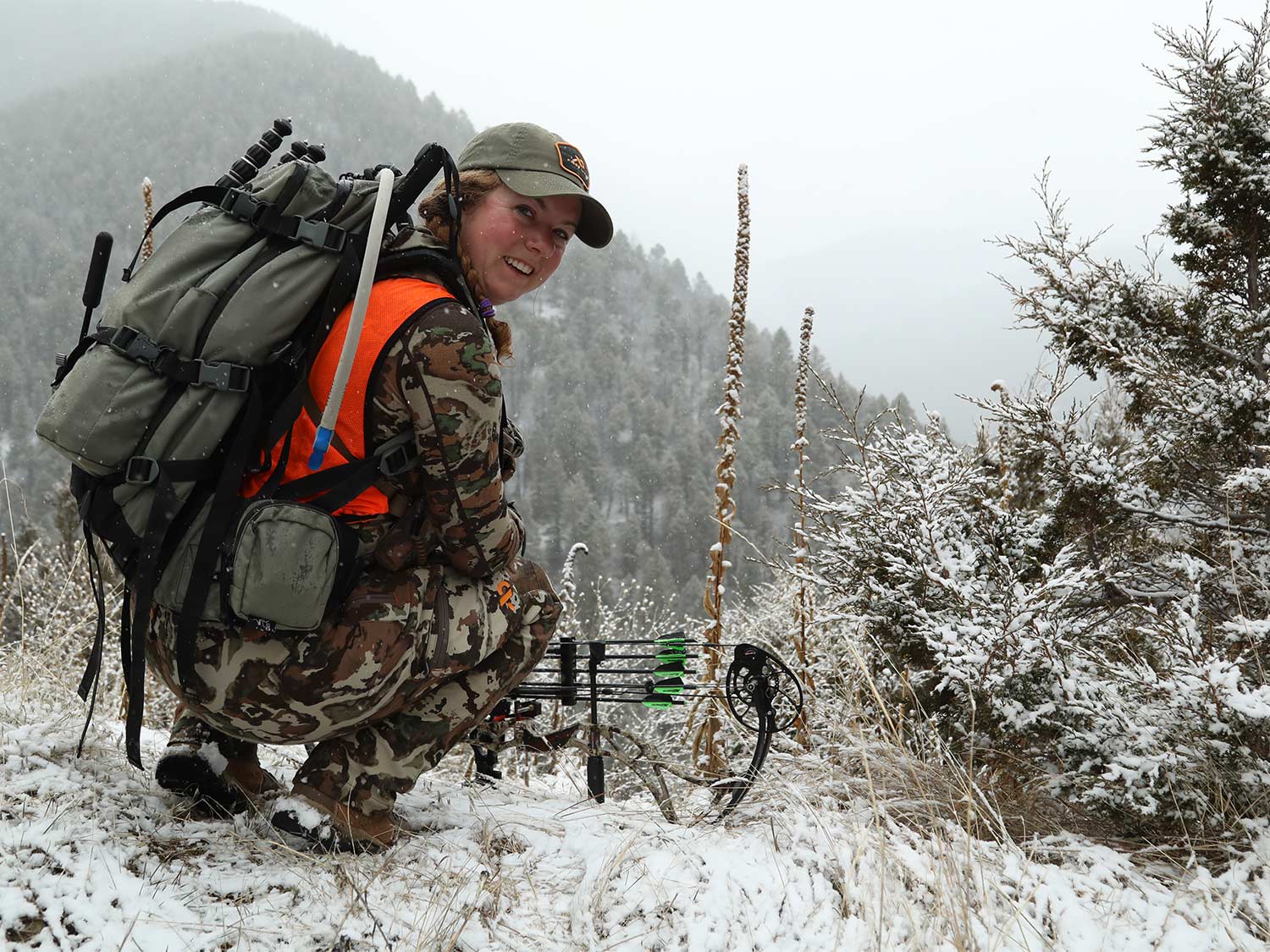
Jess Johnson: We Need to Breakdown Stereotypes
The adage that, “you’ve only killed a few animals, so you don’t know what the hell you’re talking about,” doesn’t hold water anymore, not if we want to keep this thing sustainable. That said, should new hunters be doling out hunting tips? Well, that all depends. If it’s about what to expect as a new adult hunter, then yes. If we’re talking thermals and buck rubs, maybe not yet—it’s all subjective on a case-by-case basis. But traditionalists have to respect a new hunter’s right to form their own thoughts about hunting and express them.
“The new adult hunter is going to have to do a bit more soul searching,” says Jess Johnson. “They are going to have to explain to their non-hunting friends and loved ones why they now hunt. That can be hard.”
Johnson, 30, has been hunting for the last 10 years and is a lobbyist for the Wyoming Wildlife Federation as well as a member of Artemis, a sportswoman’s conservation group. She’s had a variety of interactions with hunters young and old. Her role with WWF has also consistently put her in touch with the non-hunting public. She has had countless conversations with those opposed to hunting, but has turned adversaries into friends. Or at the very least, she’s got people to appreciate the reasons why she hunts.
“The most common response I get is ‘how can you be a conservationist, when you’re a murderer?’” Johnson said. “So, I talk about the work I put in to hunting these animals and my belief in only eating meat when I know where it has come from. It’s meaningful and difficult for me whether I kill a rabbit or a deer, and non-hunters will typically have an appreciation for that.”
Folks who did not grow up hunting may not comprehend why someone would celebrate the death of an animal. And traditional hunters may not comprehend why you wouldn’t. So, we have to find a way to bridge that gap instead of digging in.
“There’s a saying that goes: ‘to be heard, you must be willing to speak the language of those you wish to listen,’” Johnson said. “I have a deep belief that a fundamental change has to happen in order to save hunting. I think that it is happening, but for it to continue we must communicate with each other and provide more access to the outdoors.”

Ben Potter: Create Content the California Way
Filmmaker Ben Potter, 36, is at the top of the short-film game. His work in the hunting space is rivaled by only a select few. But being the best isn’t the driving force behind his films. His content focuses on bringing unknown hunters and local legends into the light. Instead of making films about the killing, he makes it about the journey, and that is no more prevalent than in Hunt41, a waterfowl platform that details the destinations—and lengths—duck hunters go to in pursuit of feathers.
“My goal is to paint this picture of what all these different states look like, how they hunt,” Potter said. “I hope it unites waterfowlers, because we can sometimes go into our own camps. Like, saying I can’t hunt with you because you don’t wear this particular camo…that’s bullshit.”
As he has gotten older, Potter has begun to care much more about passing on the traditions of hunting to younger people, namely his own son. His films have always tried to bring new faces into the fold so that we all can better understand the different cultures that exist within our sport and outside it. That was a shift from most outdoor TV or YouTube videos that made the hunt more about the individual and the big ol’ buck a good ol’ boy was hunting. He stopped making hunting unattainable, following around regular folks.
“I think that being from California is what made it all possible,” Potter said. “It’s a jungle of people out here, and that’s the way I like it. The ‘mess’ makes it more diverse, and so I am open to different ways of thinking about things that people in other parts of the country might not be.”
The hunt side of his business, Cana Outdoors, is funded by outdoor-focused brands, but he tries to create content anyone would find appealing. Potter tells personal stories everyone can relate to in hopes of uniting people. His films and photos do not discriminate. They are not made for a select group.
“I feel a responsibility to present media in the right way; to not draw lines,” Potter said. “I want to encompass everyone, create a place where anyone can fit in.”

Hank Forester: Food is the Fuel
Hank Forester, 34, of the Quality Deer Management Association and friend Charles Evans, proved that food can bring people into hunting by starting Field to Fork in Athens, Georgia, four years ago. Since then, they’ve seen it grow into 26 programs in 17 states.
They began by handing out venison at a local farmer’s market, knowing the data was on their side (85 percent of Americans approve of hunting for meat, according to the National Shooting Sports Foundation). That led to the creation of the FTF program, which includes classroom study and mentored hunts for whitetails on mostly private land.
“In the last four years we have put 50 people through the (Athens) program, and retained about 70 to 80 percent,” Forester said.
FTF was a break from traditional R3 initiatives that occurred once a year and had little to no follow up. New hunters go through training, learn safety and deer habits and then are given a year of free property access. The program has private Facebook pages and email chains so mentors can connect with mentees, share information and exchange recipes. New hunters are also given a free subscription to onX Maps, which identifies land owners, so they can door knock or call for permission.
“We have to remember that adult-onset hunters did not grow up hunting; they might have not grown up in the wilderness,” Forester said. “So, we have to think about how we speak to them and what we show them.”
For example, when biologists are studying deer herd health, they cut the jaw bone from a whitetail; pretty gruesome if you’ve never been around a dead deer before. He says we have to be more informative, because once non-hunters understand the reason for aging a deer (it helps sustain the resource), they are more apt to lend their support.
Forester said traditional hunters need to do a better job of inviting those that don’t hunt to deer camp because the numbers are there (79 percent of Americans approve of legal hunting, according to the book The Sportsman’s Voice: Hunting and Fishing in America, published in 2010). The barrier is those folks that want to hunt don’t know how, or they think it’s too daunting a task.
“Really all you have to do is take hunter’s education and buy a bow (or gun) to get started,” Forester said. “You walk by people at work every day that want to hunt, I guarantee it.
“We had someone participate in Field to Fork that worked at a roofing company where every guy had a deer head hanging in his office but him. He wanted to learn how to hunt, but no one ever asked him.”



